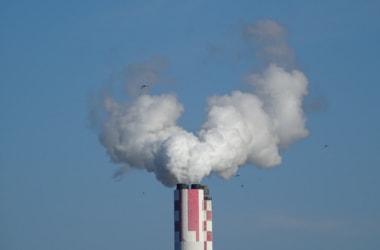
According to the State of Global Air 2017 report, as many as 2.54 lakh deaths occurred in 2015 on account of exposure to ozone and its impact on chronic lung disease.
India accounts for the highest number of premature deaths due to ozone pollution, its toll 13 times higher than Bangladesh's, and 21 times higher than Pakistan's
92% of the world's population lives in areas with unhealthy air.
With more than 2,000 researchers, the report factored in the role of an extensive set of behavioural, dietary and environmental risk factors for more than 300 diseases in 195 countries from 1990.
India's worsening air pollution caused some 1.1 million premature deaths in 2015 and the country now "rivals China for among the highest air pollution health burdens in the world," as per the report.
The special report on 'global exposure to air pollution and its disease burden' noted that the number of premature deaths in China caused by dangerous fine particulate matter, known as PM2.5, has stabilised in recent years but has risen sharply in India.
It also said that both the countries together were responsible for over half of the total global attributable deaths.
India had registered an alarming increase of nearly 50% in premature deaths from particulate matter between 1990 and 2015.
The State of Global Air 2017 is the first of a new series of annual reports and accompanying interactive website, designed and implemented by the Health Effects Institute.
This is in cooperation with the Institute of Health Metrics and Evaluation (IHME) at the University of Washington and the University of British Columbia.
The IHME is an independent population health research center that publishes the annual Global Burden of Diseases -- a systematic scientific effort to quantify the magnitude of health loss from all major diseases, injuries, and risk factors in populations across the world.
Its results are published every year.
US has experienced a reduction of about 27% in average annual population exposures to fine particulate matter with smaller declines in Europe.
Yet some 88,000 Americans and 258,000 Europeans still face increased risks of dying early due to PM levels today.
The report noted that the highest concentrations of combustion-related fine particulate matter were in South and Southeast Asia, China and Central and Western Sub-Saharan Africa in 2015.
These are the countries where household solid fuel use, coal-fired power plants, transportation, and open burning of agricultural and other wastes were among the most important contributors to outdoor air pollution.
"The Global Burden of Disease leads a growing worldwide consensus - among the WHO, World Bank, International Energy Agency and others - that air pollution poses a major global public health challenges.
The study finds that increasing exposure and a growing and ageing population have meant that India now rivals China for among the highest air pollution health burdens in the world.
Both countries are facing some 1.1 million early deaths from air pollution in 2015.
It said the long-term exposure to fine particulate matter -- the most significant element of air pollution -- contributed to 4.2 million premature deaths and to a loss of 103 million healthy years of life in 2015.
This is making air pollution the 5th highest cause of death among all health risks, including smoking, diet, and high blood pressure.
Health Effects InstitutesThe Health Effects Institute is an independent, non-profit corporation.
It is specializing in research on the health effects of air pollution.
It is headquartered in Boston, Massachusetts, United States.
Founded: 1980